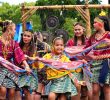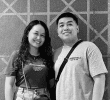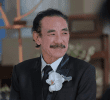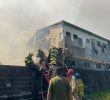Here, one may find herself in the middle of the jungle of Mount Apo, the Philippines’s highest peak, and finds that she is still within city limits.
By Germelina A. Lacorte
davaotoday.com
DAVAO CITY — Far from the Moro settlement that the Spaniards found when they first arrived here in 1848, the city of Davao has grown into a trading and financial hub of Mindanao and that of the East Asean Growth Area (Eaga).
Its international airport is Mindanao’s busiest, with direct flights to Singapore, Hong Kong, Osaka, Kuala Lumpur and Manado, Indonesia. As the center and staging point for the four Eaga countries (Brunei, Indonesia, Malaysia, Philippines), Davao has opened new direct air links and shipping routes connecting key cities of the four countries to each other, fueling trade and investments over the past years.
Still considered the world’s largest in terms of land area, Davao’s boundary area of 942 square miles is much bigger than New York (369 square miles), Tokyo (832 square miles) and London (610 square miles).
Here, one may find herself in the middle of the jungle of Mount Apo, the Philippines’s highest peak, and finds that she is still within city limits. But the presence of revolutionary groups operating along the city’s boundary areas makes some visitors wary. The Communist New People’s Army (NPA) is waging a Maoist revolution in the Philippine countryside, which includes Davao, while the Moro Islamic Liberation Front (MILF) is still waging a separatist struggle.
Up to the mid-’90s, investors have been flocking to Davao in droves until the great Asian financial crisis in 1997 sunk many of their projects.
At the height of the country’s economic boom, when the Philippines used to be considered an “emerging tiger economy,” a flurry of investments in new skyrises, big shopping malls, commercial buildings and new subdivisions starting in the year 1994 swiftly changed the city’s skyline.
As a result of migration encouraged by the government from the Spanish times up to the present, settlers from other parts of the country dominate the city’s fast-rising population, which is now nearing 1.5 million. Moro and the indigenous people now make up less than 10 percent of the city’s 1.4 million people.
Since the early Sixties, the economic growth of Davao has always depended mainly on the large-scale banana plantations run by multinational companies in the northern Davao province. Today, banana still tops the list of Davao’s top traditional exports, followed by such commodities as coconut oil, copra, pineapples, tuna, processed foods that find their way to the markets of Japan, the United States, Middle East and Europe.
Over a half a million tourists have been visiting the city annually in the past years, roughly 10 percent of them are foreigners, mainly the Japanese, Americans, Australians, the Koreans, and the Chinese and Hongkong tourists. Other visitors included Canadians, those from Southeast Asia, and European tourists.
Although Tagalog, the national language, is spoken and easily understood here, the dominant language is still Cebuano or Davao’s own version of the Visayan dialect. But English is spoken and understood everywhere, even by shoeshine boys in the park or jeepney drivers. (Germelina Lacorte/davaotoday.com)










